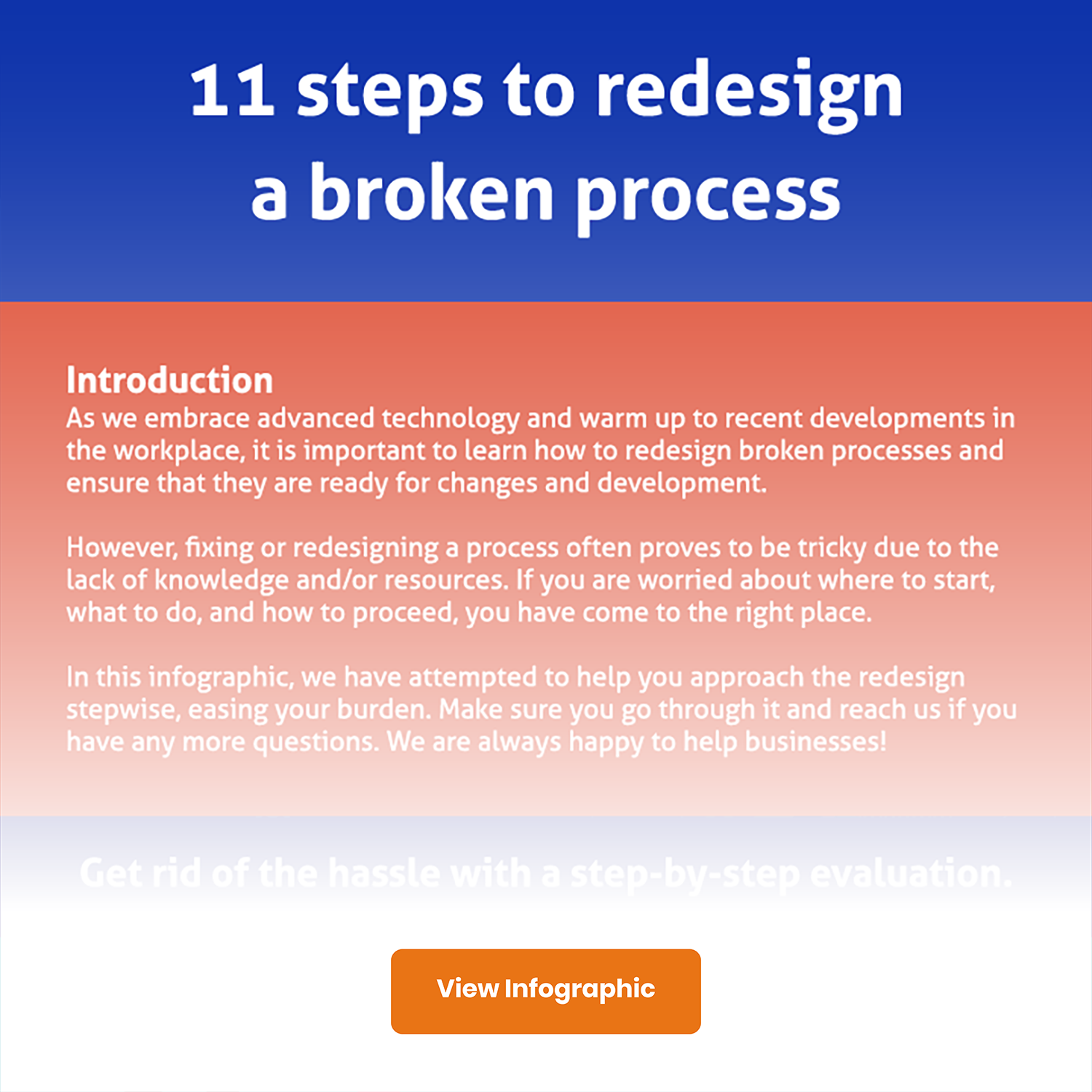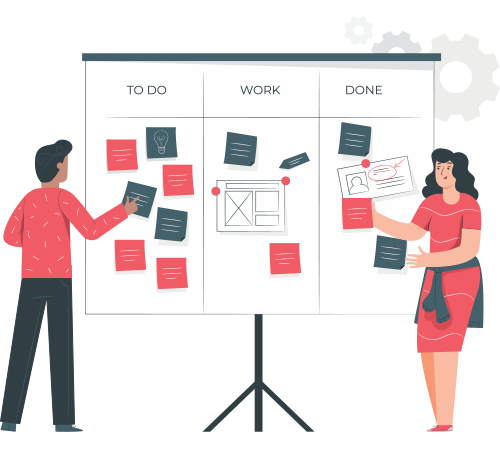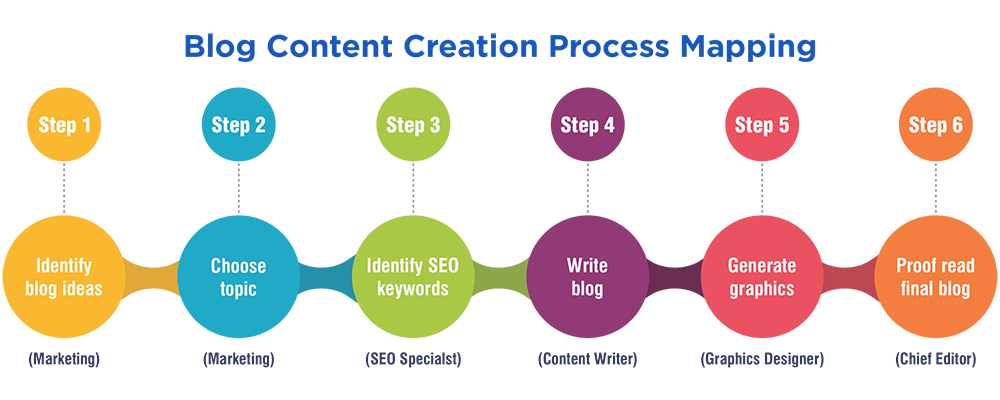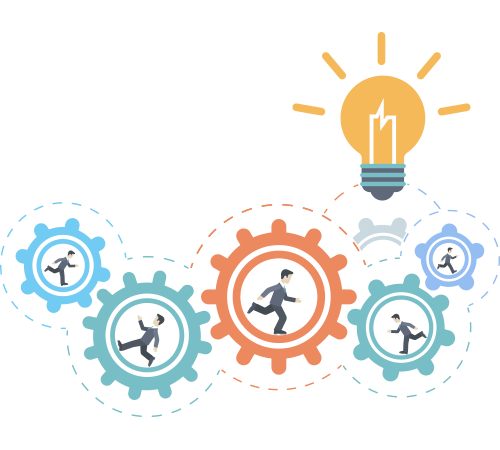
This article (11 steps to fix a broken process) was first published on ThriveGlobal
If it is broken, it must be fixed pronto. Or else it can cause a number of problems. The good thing is that fixing something gives us immense pleasure. The process is usually quite satisfying, and the end result is amazing! You get the same feeling when you fix a broken process at work, and the satisfaction increases with an increase in the complexity of the broken process!
But because we are always so busy with our daily routine activities at work, more often than not, we do not take action to fix the broken processes. This becomes even harder when fixing the processes requires working with other stakeholders.
11 Ways to Fix A Broken Process
Organizations often seek automation of processes as a solution to fix them, assuming that removing paperwork and adding automation will improve efficiency, boost productivity, and yield a solid ROI while improving employee satisfaction. Let us warn you: it may not always be the case. Without a systematic approach, just throwing technology at a problem MAY NOT solve the problem.

In this article, we help you break down the process of fixing a broken process into manageable and systematic smaller steps. These steps, when followed, can lead you to an optimized and streamlined process that can save you time and energy and help you spend that time on more fulfilling activities.
Do not forget to involve the relevant stakeholders in each step, or you may not get the results you intend to achieve.
Let’s get started:
1. Identify the broken process
Unless you know what’s broken, how will you fix it?
Dissatisfied customers; activities that take too long and/or don’t yield expected outcomes; unhappy employees; departments blaming each other for problems are all indicators of a process that is broken.
So go ahead and identify the broken process that you would like to fix.
2. Set the Goals

It’s very important to identify and set clear goals you want to achieve by fixing a broken process. Is it the productivity, or is it the agility? Is it customer satisfaction, or is it employee morale? Clear goals will help you choose the right approach for fixing your process.
With clear objectives and goals, move on with the next steps.
3. Identify Key Stakeholders
Identify everyone who is directly or indirectly involved in the process. Understand their needs and also establish their roles and responsibilities.
4. Study and evaluate
After identifying the broken process and setting the goals, you need to understand everything about the process under consideration. Some of the things to consider for evaluation:
- What is the problem with the process?
- When was the process established? What was the objective?
- Why is it done the way it is?
- Were there any issues reported earlier? Were any fixes tried?
- Are there any steps that must not be touched? Why?
Remember, you might discover that some of your steps in the process, or maybe the process altogether, can be eliminated because they don’t contribute anything and exist just because they’ve always existed.
Gathering everyone involved in the process at hand and taking suggestions can also help you. You will identify which steps need immediate attention and which ones cannot be touched.

5. Establish the redesign principles
Principles help with the right solution to fixing the broken process. While organizations may establish their own principles, the core principles majorly include:
- Focus on the desired outcome, not intermediate steps
- Minimize waiting time between steps
- Minimize rework
- Keep the number of checks and reviews to a minimum
- Minimize the number of people involved in the process
- Standardize the process
- Remove bottlenecks
- Set a secondary process for exceptions
- Eliminate data silos and keep all data related to the process in one central system
- Minimize risks
6. Map the process
Note that while effective process mapping is probably the most crucial step, it won’t be fruitful until you follow the previous steps.
The idea here is to identify every step in the broken process and add as many details as possible about it. Details include the trigger for the process, each step in the process, team members responsible for each step, alternate flows in the process, the place where the step takes place, the tools used for the process, etc.
Use mapping tools to help you in the process.
Once you have mapped the process, try to pinpoint where the trouble lies. Locate steps where you see the bottlenecks and inefficiencies that are hampering the process objectives.

Once you do this, you will understand which step is the actual pain point. You will also identify unnecessary steps along with realizing where exactly the problem is – in the process or the execution.
Here on, the steps to redesign a broken process get easier.
Also read: Business process management – The what, why, and how
7. Redesign the process
What could you do differently? Apply the design principles to redesign the process. You could eliminate a few steps or redefine them. Maybe add automatic notifications to the person responsible for the next step after completing the previous step. You could also automate wherever necessary.
8. Get all the help you need
This may be in the form of tools or manpower (or both). There are multiple platforms and IT professionals that excel in business process optimization. You could take their help to redesign a broken process. You may need to make a purchase or spend money on hiring, but it will be worth it.
Figure out your options for getting the new tools or platforms. Figure out the limitations of the tools you have available. Understand the cost implications? If you’re comparing multiple software solutions, take a look at third-party review websites like G2 to get real insights into the pros and cons of each.
Also read: BPM Software – 10 things to consider to choose the right one
9. Provide Training
Another important task here is to ensure the process’s end-users are trained on the new process and the tools involved. They must be given the necessary training materials they need to really understand this new process and their roles and responsibilities with the new process. This step is generally forgotten and therefore can lead to poor adoption of the new process.
10. Implement the new process
You’re almost there! All that’s left to do now is to implement it but don’t rush it yet. The process has users (multiple users in most cases), and you don’t want to annoy them with a faulty new process. Take it slow, thus, and start testing it. Do not accept the perfect result on the first attempt. You can first implement the process for a smaller group and monitor the performance. Based on the outcome, you may improve further or roll out the process to all the users.
11. Keep improving

When you redesign a broken process you should remember that business process improvement is a continuous game. One level of optimization or testing will not help. As the process is used more and more, concerns may keep arising. This is why there should be checkpoints to revise unclear steps, automate whatever is possible, and remove bottlenecks.
Following these steps to fix a broken process will help you minimize the use of resources and save time. We advise you to take one process at a time and work your way up instead of taking a big-bang approach.
Create a checklist with the above steps if you need to, and make it your mantra! It works!
Summary
Broken processes lead to inefficiencies in operations, frustrated employees, and unhappy customers. Fixing them requires a systematic approach that can yield desirable results when followed correctly.
Quixy, as a business process management (BPM) tool, assists you in these steps to fix broken processes in the easiest way possible. No matter which business process you are looking to redesign, you can use the Quixy platform to fix, automate, and optimize it! Get Started Today! Empower your organization with automation and customized app development without coding.
Subscribe
Login
Please login to comment
0 Comments
Oldest
















